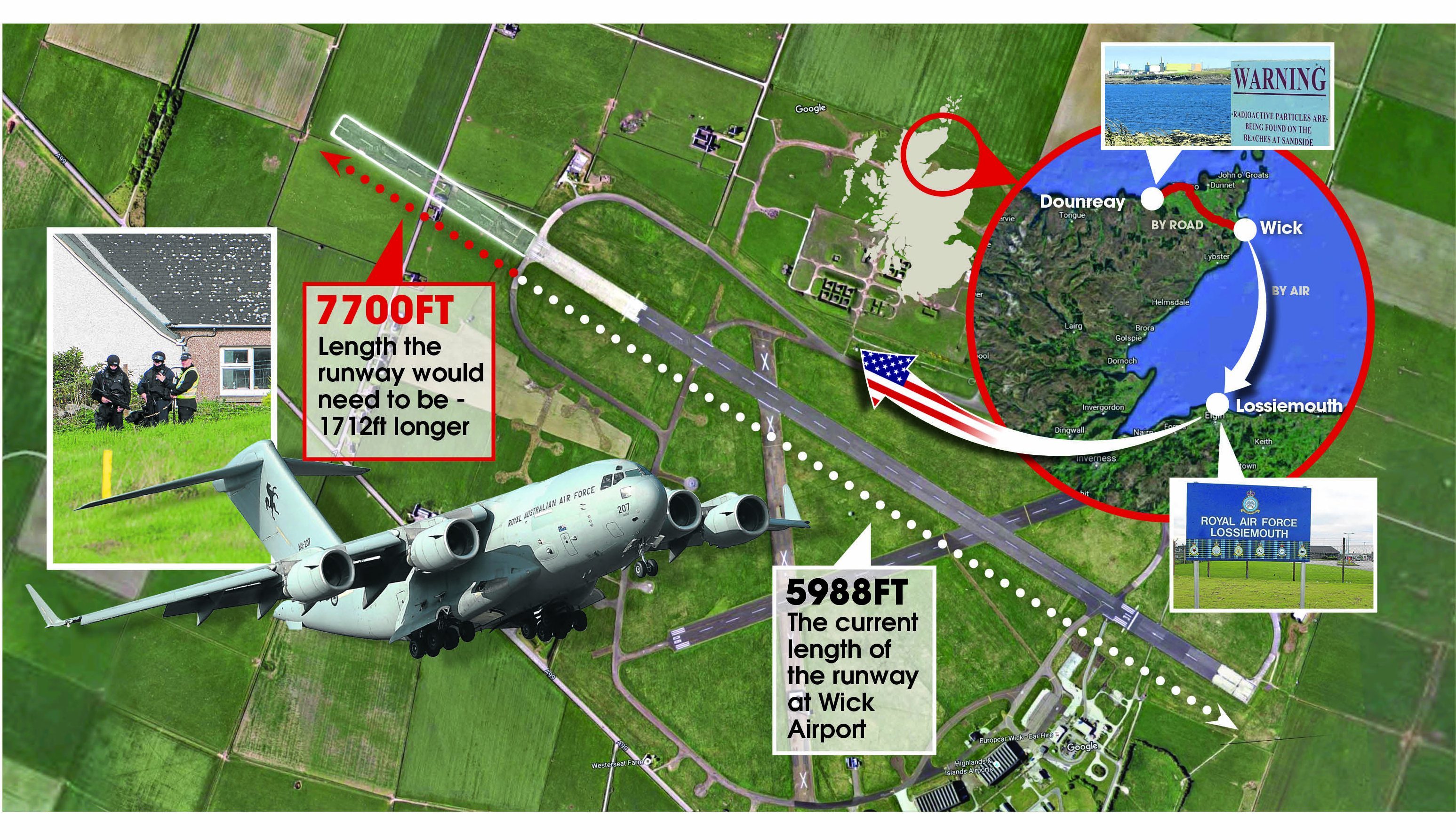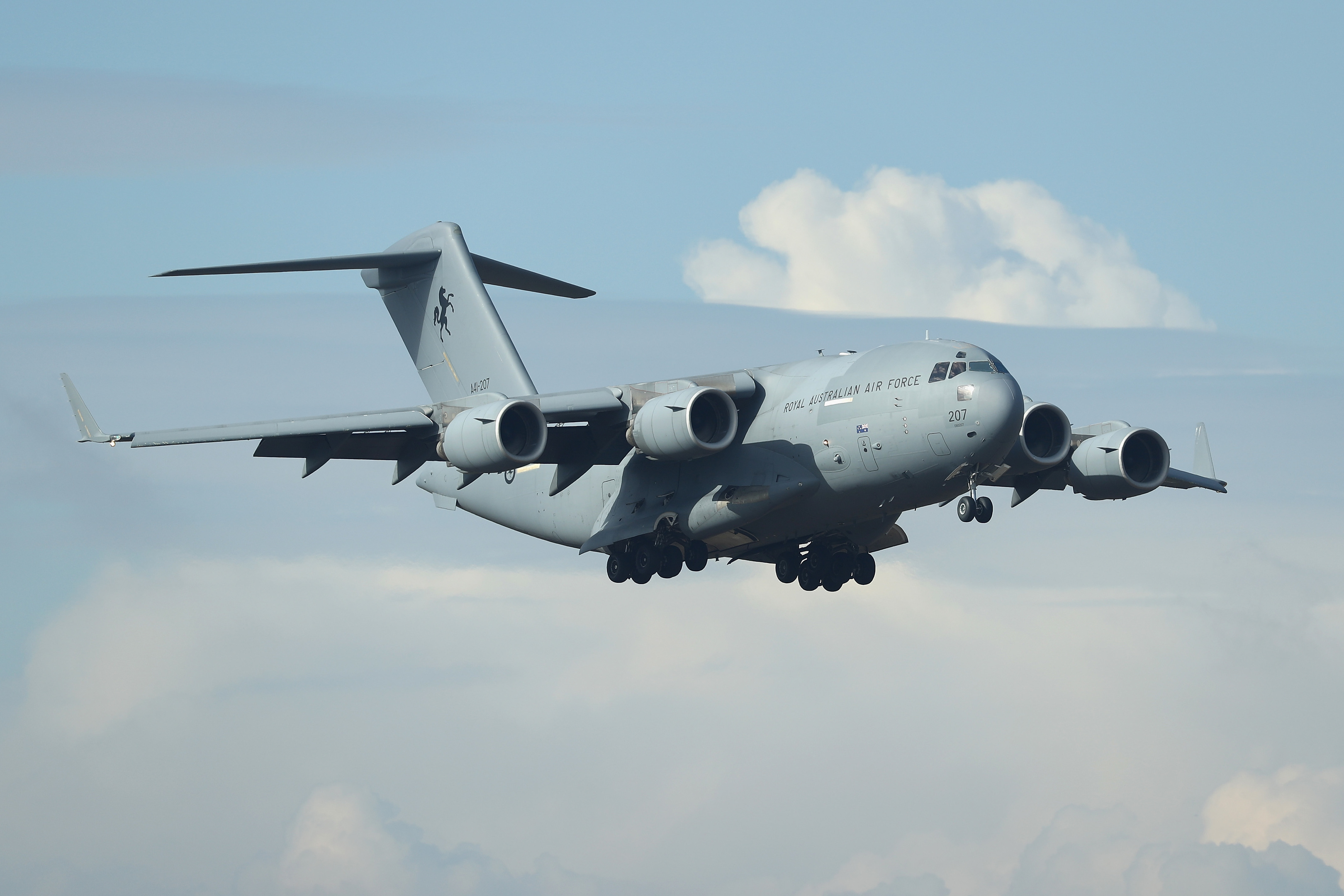
NUCLEAR chiefs need to use two Scottish airports to transport deadly waste to the US – because the first airstrip isn’t big enough.
Authorities spent £8 million of taxpayers’ money upgrading Wick John O’Groats Airport in Caithness this summer to fly high-grade nuclear waste to America.
The waste deal concocted by former Prime Minister David Cameron and President Barack Obama meant highly enriched uranium – the basic building block for making a nuclear bomb – was to be flown from Wick to the US in return for “medical grade” uranium to make radio isotopes for detecting cancer.
Airport bosses say they “strengthened” the runway over the summer so it could cope with heavy load planes.
But they didn’t extend it.
It’s now been revealed that the airstrip is too short for a plane carrying nuclear waste and a full tank of fuel to take off from the remote airport.
Instead, on September 17, transport chiefs were forced to re-route the C-17 Globemaster jet to RAF Lossiemouth in Moray to fill up its tank before heading to the States on its secretive maiden voyage.
Insiders at the base say they have been told the practice is set to be extended for the next year at least.
It means the deadly nuclear cargo will take off and land on the outskirts of the Moray town as well as in Wick.
A further dozen transatlantic runs are expected in the coming year to clear the backlog of around 700kg of highly enriched uranium stored at Dounreay.
A source said: “It’s embarrassing authorities spent so much money on upgrading Wick Airport but seemed to forget about such a basic like making the runway longer. Using that solely would have mitigated some of the risks.”
Last night, campaigners and politicians claimed using a second Scottish airbase doubled the danger of a nuclear catastrophe.
Highlands and Islands MSP John Finnie said: “Transporting nuclear waste is a risky business. By using two airports you are doubling the take-offs and landings in this country, which doubles the risk.
“It is disturbing to discover we are now using an extra airbase in heavily populated areas for a stop-off to transport nuclear waste.”
Manufacturer Boeing’s website states that the Globemaster – which requires 90 tonnes of fuel to fill its tank – needs a 7700ft runway for take-off.
But Wick John O’Groats runway – at 5988ft in length – is too
short.
RAF Lossiemouth’s military airfield, located on the western edge of the town, has a 9000ft runway.
Aviation expert and former pilot David Learmount explained: “A huge plane like this making a transatlantic flight really needs at least 7000ft for take-off. Using an airstrip smaller than that isn’t a good idea.”
On its first journey two weeks ago, the plane carried two heavily-reinforced, steel cylindrical casks, coated in a dense plastic material, weighing a few tons each.
The flights are estimated to cost around £1 million a time, including safety and security costs.
Last night, a spokesman for the Nuclear Decommissioning Authority refused to reveal the route the flights were taking.
He said: “Our priority is to comply with the regulations governing the safety and security of nuclear material.
“Compliance with the regulations includes protecting information about the routes, times, dates and location”.
Last night, independent nuclear consultant John Large said: “This is pretty toxic stuff.
“This is weapons grade material. It is quite active. It’s ticking away. It does not turn itself off.
“In the States you cannot overfly with this type of material. The planes will put down on the east coast and the shipment will continue under armed escort by rail or road.
“The risks in transport by aircraft are, in the event of a crash, the fuel being engulfed in fire, the packages breaking down and the fuel igniting.
“The greatest risk is in the transportation of this material.”
A spokesman for Wick John O’Groats Airport said: “We don’t comment on specific aircraft movements. However, all permitted movements at Wick John O’Groats airport comply with the operating protocols and requirements of the airport.”
READ MORE
London Heathrow set to become world’s first “dementia-friendly” airport
Ailing Prestwick Airport has cost taxpayers £17m

Enjoy the convenience of having The Sunday Post delivered as a digital ePaper straight to your smartphone, tablet or computer.
Subscribe for only £5.49 a month and enjoy all the benefits of the printed paper as a digital replica.
Subscribe